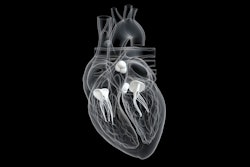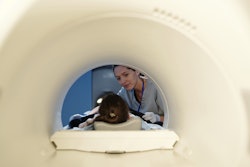If there's an early decision to request an emergency CT scan, focused abdominal sonography in trauma (FAST) and digital radiography are not routinely required. This is one of the key recommendations of a new report from the U.K. Royal College of Radiologists (RCR).
The 38-page document, "Major adult trauma radiology guidance," aims to outline good practices for the provision of trauma radiology to severely injured patients. It covers how diagnostic imaging and interventional radiology services should be delivered, what quality indicators can be used, provision of protocols for imaging and reporting, and equipment requirements
"An acute trauma setting is not the place for disagreements about the patient pathway," the authors noted. "Immediate management decisions must be made by the designated trauma team leader. Major trauma centres and trauma units will have multidisciplinary debriefings about severely injured patients on a regular basis to assess processes and adjust pathways if necessary."
A radiologist involved in trauma management should attend these meetings, and individual cases must be considered in the radiology department meetings, they added.
CT should be adjacent to or in the emergency room, but where this is not the case, transfers must be rehearsed and performed according to protocol. Also, simulation or rehearsal of patient transfers should be performed at regular intervals (at least once yearly), and radiology departments in major trauma centres and trauma units should plan to make this available in the near future, the authors wrote. Digital radiography must be available in the emergency room, and MRI must be available with safe access for severely injured patients.
Other key recommendations are as follows:
- There should be clear written protocols for CT preparation and transfer to the scanning room.
- Whole-body contrast-enhanced CT is the default imaging procedure of choice for severely injured patients.
- Imaging protocols should be clearly defined and uniform across a regional trauma network.
- Future planning and design of emergency departments should concentrate on increasing the number of severely injured patients stable enough for CT and intervention.
- On-call consultant radiologists must have teleradiology facilities at home that allow timely review of images.
"A provisional primary survey report should be issued as soon as possible to the trauma team leader. This should be either as a signed paper copy (with a copy retained in the radiology department) or as an electronic pro forma on the radiology information system," the authors stated. "The final formal report on severely injured patients should be provided within one hour of CT acquisition. This should be provided by a consultant radiologist or by an appropriately experienced radiology trainee, with a consultant addendum added within 24 hours."
Interventional radiology trauma teams should endeavour to begin treatment within 30 minutes of a referral, and facilities should be co-located with the emergency department or transfers must be rehearsed and follow defined protocols. Angiographic facilities and endovascular suites in major trauma centres should be safe environments for severely injured patients and should be of a suitable standard.
"Any deficiency in consumable equipment should be reported at the debriefing, be documented and be the subject of an incident report," the authors wrote. "Where patients are transferred, there should be systems in place for locally acquired images to be transferred to the receiving hospital within one hour."
You can download the full document via the RCR website. The chair of the working group that prepared these guidelines was Dr. Christopher McLeavy, consultant radiologist at Liverpool University Hospitals NHS Foundation Trust and President of British Society of Emergency Radiology (BSER).



















